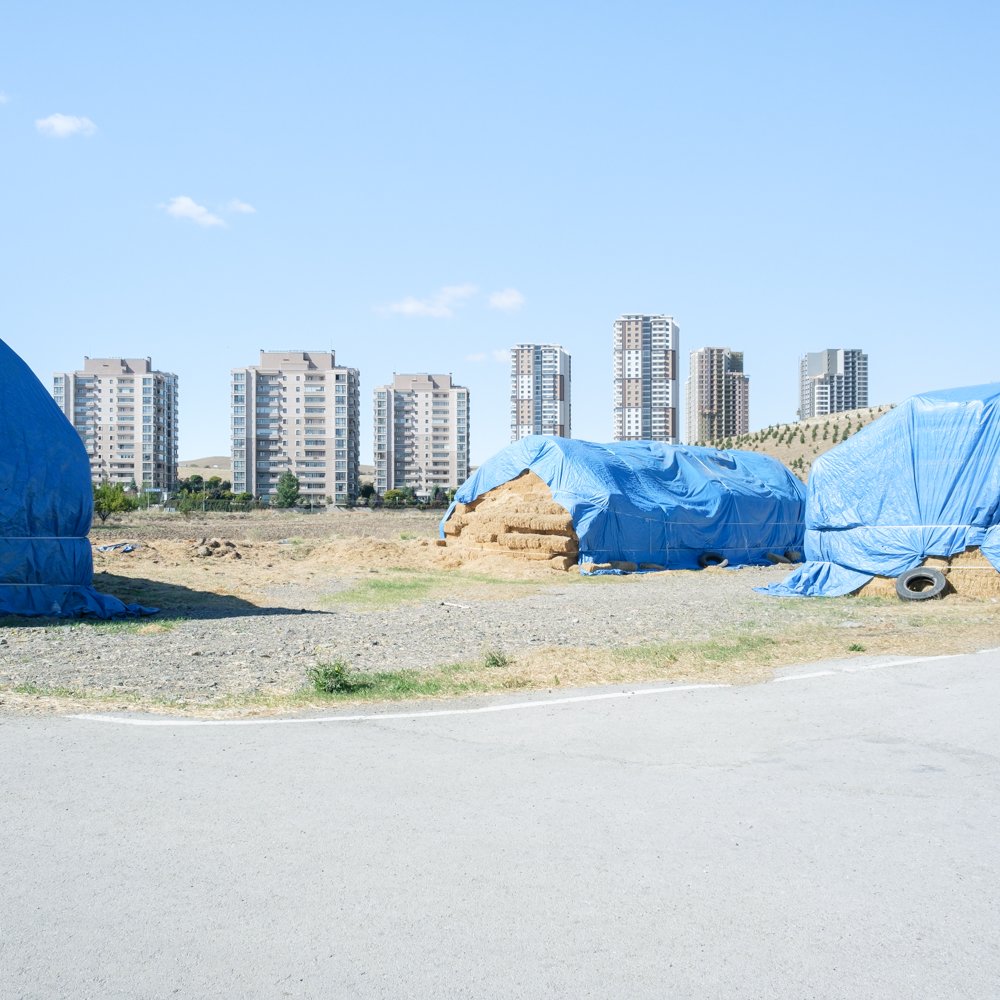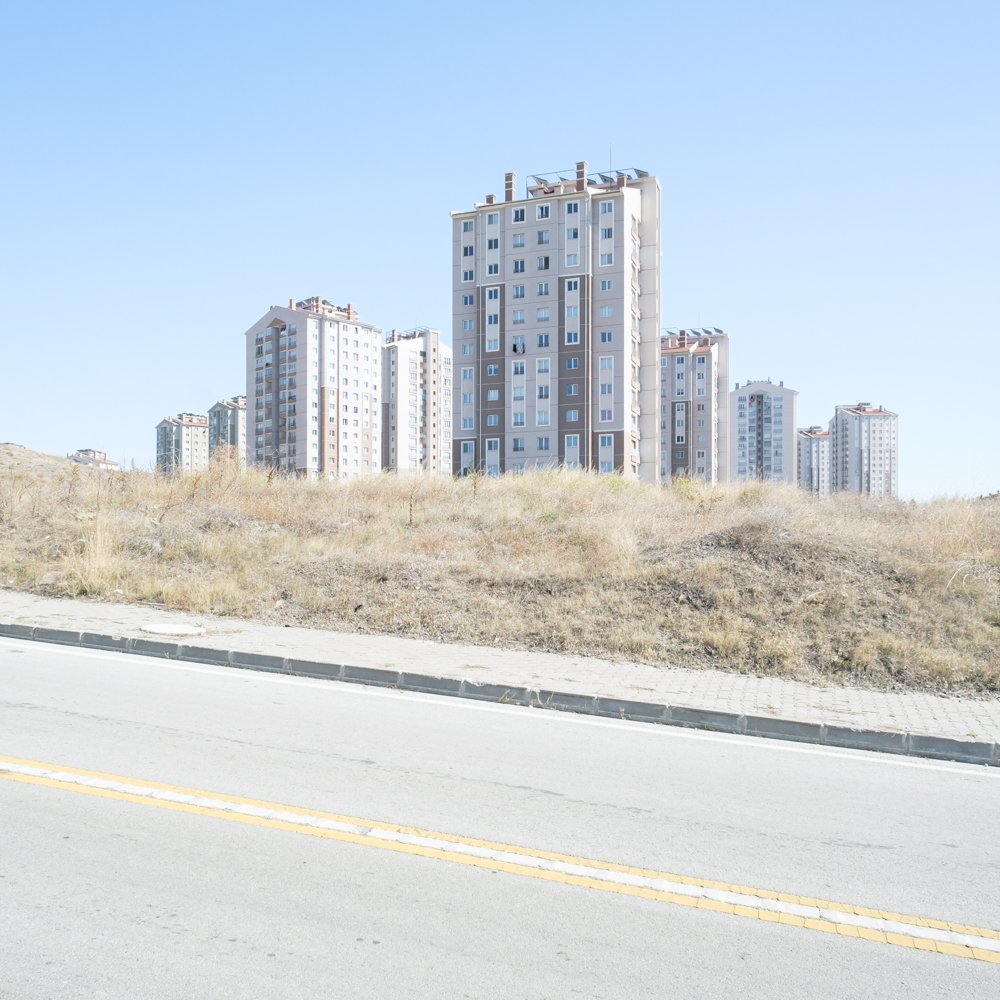Dariusz Jasak - A Way
Working within photography, Dariusz’s subject matter extends from architectural curiosities to fashion editorials. His series, A Way, focuses on the phenomenon of the United States’ automobile industry.
Read MoreWorking within photography, Dariusz’s subject matter extends from architectural curiosities to fashion editorials. His series, A Way, focuses on the phenomenon of the United States’ automobile industry.
Read MoreI live in the southern suburbs of Athens, Greece. Inhabited continuously since the ancient times, this is a place characterized by material abundance and laid-back, luxurious lifestyle. At the same time, high fences, barbed wires and surveillance cameras turn the houses into strongholds or border barricades and the streets into some kind of urban “no-man’s land”.
Read MoreSijia Ma’s series, A Hundred Stories, explores the interconnected and generational relationships between the aging and young populations of three watertowns in the Zhejiang province of China: Jiaxing, Shenyang, and Xicheng.
Read MorePhotomontages of surreal cityscapes embody the disquieting experience of how our lives have been interrupted and transformed by the ravages of a global pandemic. In March, 2020, we retreated from our daily routines and into our homes for an unprecedented period. During prolonged lockdowns, we relied more than ever on the digital arena for connection, support and psychological survival.
Read More“My recent work explores flowers in the occasions of life and death - in celebration, memory, and in mourning. Flowers are reminders and remnants, mementos of lives once lived. I create art to capture and preserve the essence of being in these moments.”
Read More“The project is dedicated to my hated and beloved suburbs. Through a metaphysical approach, this series examines the theme of photographic obsession and the tension of everyday life.”
Read MoreMy last project is "Du musst dein Leben ändern.*" The series focuses on the media appearance of contemporary polarized political discourse ( especially in Hungary ) and its impact on the human psyche.
Read MoreFrancesco Capasso’s series of photographs taken at the Coppola village in the province of Naples
Read MoreIt’s nearing a year since we last spoke to Kenneth Lam about his series The End of an Era. His latest project, The Jobs We Did, represents another year of further introspection, which explores the idiosyncrasies of first generation Chinese children, specifically those who worked in their parents’ takeaways and restaurants.
Read MoreEl Chorrillo is a neighbourhood in Panama City, founded in 1915 by workers and students, mostly of African descent, who found employment in the construction of the Canal. 2019 marked the 30th anniversary of the US invasion that disproportionately destroyed this neighbourhood in less than 24 hours without any international impact.
Read More32 years have passed since the fall of the Berlin Wall. The political, ideological, and in some cases physical frontier divided not only Germany, but the entire world in two axes; one of a capitalist character and his nemesis, the communist.
Read MoreLiu’s series The Place–void of much direct human presence—captures the decades of history that have been left within the architecture and objects of Dali city. The themes of these stories—a vespa branded with an American flag, the Cangshan Mountain peak, a visitor basking in the sun—overlap and conflict with collective romanticizations and their physical realizations.
Read MoreRead MoreFar from here, where darkness lies “(...) to reclaim perspective in a universe Where science and wisdom are no longer valued to escape talking heads who pontificate ceaselessly on screens large and small, generating more heat than enlightenment While I remain bewildered in darkness.”
Sixty Days by Martina Martorelli is a devastating portrait, which details how Covid-19 impacted the daily lives of her grandparents–in particular her grandfather who was recently diagnosed with Parkinson’s disease.
Read MoreBenidorm, Topography of Mass Tourism explores the architecture of mass tourism. It is an attempt at understanding how the city was entirely planned to welcome the excesses of tourism.
Read MoreAs photographer Max Knight recovered from a difficult period in his life, he began to see colour and humour in the everyday again as expressed in his series I Think You Dropped Something.
Read MoreCi Demi’s Eminönü Blues is a series of harmonious disasters, which attempts to understand the fabric of İstanbul.
Read MoreEdges, Shadows, Lines and Details explores Fabio Catanzaro's sense of freedom and essentiality during the easing of anti-pandemic restrictions. His work combines themes such as details, lines and patterns through architectural observations.

Leah Frances’ MFA Thesis Exhibition will be on view from December 15–18, 2021 at the Temple Contemporary Gallery, Tyler School of Art & Architecture Philadelphia, Pennsylvania.
“Actively using photography to explore the residue of time and human effort, I create portraits of place, mindful of the individuals who have been there before and may be there again. Imaginary one-to-one conversations with these ghosts, so to speak, allow me to invest in the possibility that within this divided nation, we might, one day, understand and respect each other. I harness light to grasp at moments of joy in complicated environments — an attempt to pull myself out of today’s prevailing us-versus-them mentality and the fear, anxiety, anger, confusion, and disappointment I have been feeling. If half the country is engaged in backward-looking, what are they seeing? With these images—my attempts to go to, and document, the things themselves — I hope to create an opening for deep looking and the exploration of multiple layers of meaning, an encounter with complex histories rather than one-dimensional, familiar tropes. “
















Today's metropolises reflect the globalized policies and economies of the world we live in, which participate in both fragmentation (segregation, division, separation) and homogenization (coherence, conformity, uniformity) of these spaces. Indeed, these “neoliberal cities” are increasingly spread out, partitioned, and discontinuous, and are in themselves heterotopias as they have the power to juxtapose several incompatible spaces within the same space (Foucault, 1967). Gated communities, with their systems of openings and closures, inclusivity and a distinct identity within the gates are one of the symbols of modern heterotopias. If utopia offers an ideal without a real place, heterotopia corresponds to a real place. How does heterotopia take shape in today's urban landscapes? How to appropriate these heterotopic spaces and identities? Through a documentary photographic study of the peripheral landscapes of neoliberal cities, the Heterotopia project proposes to see and glimpse the urban heterotopia through its geographical margins. The approach is both simple and complex: to offer a counterbalance to the traditional visual imagery of the city's identity, and thus to question the mental representation that everyone has of it. Ankara, the Turkish capital, is one of the showcases. With more than 5 million inhabitants, this city associated with the neoliberal restructuring of the country's economy, while maintaining a certain moral conservatism through the construction of new mosques, is in constant transformation and development.














